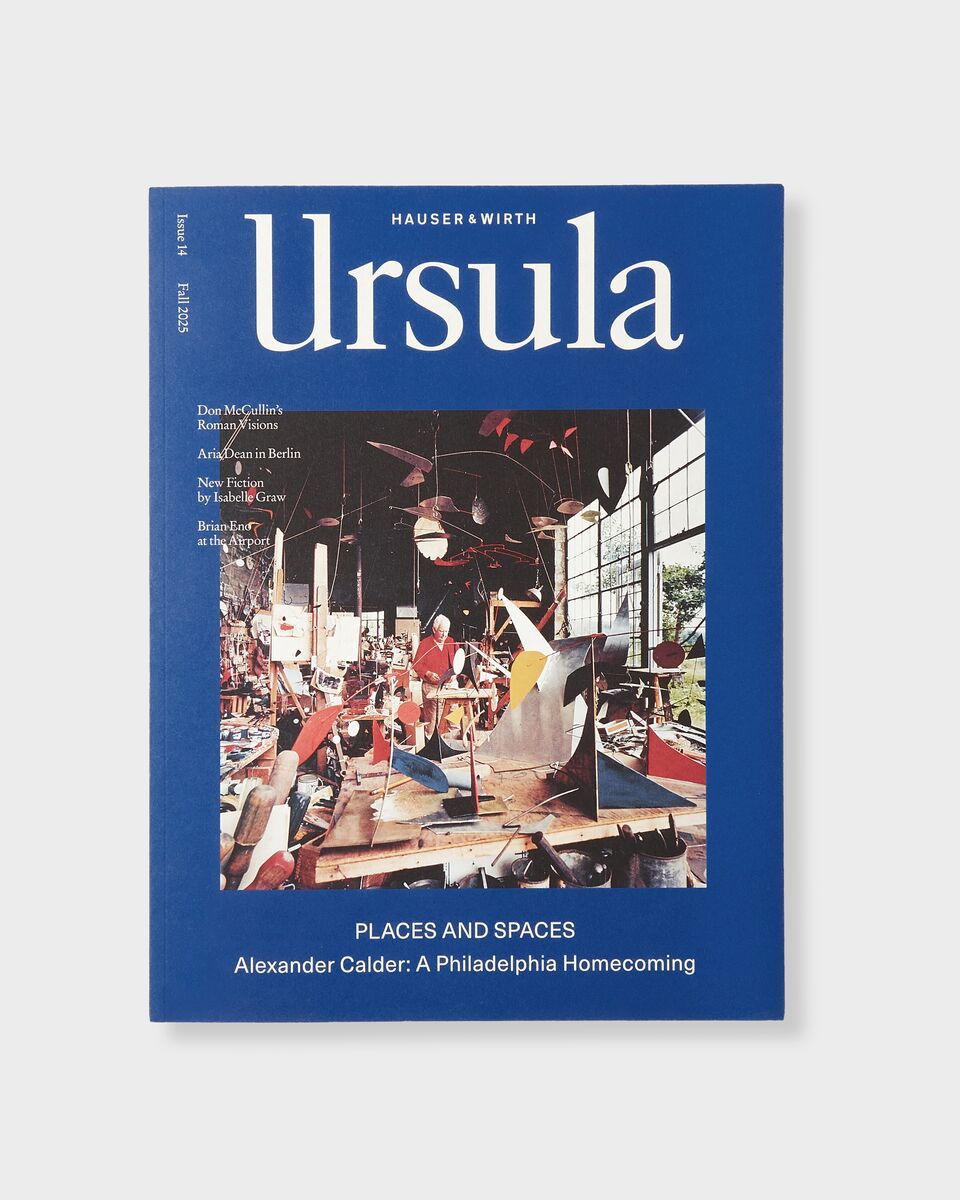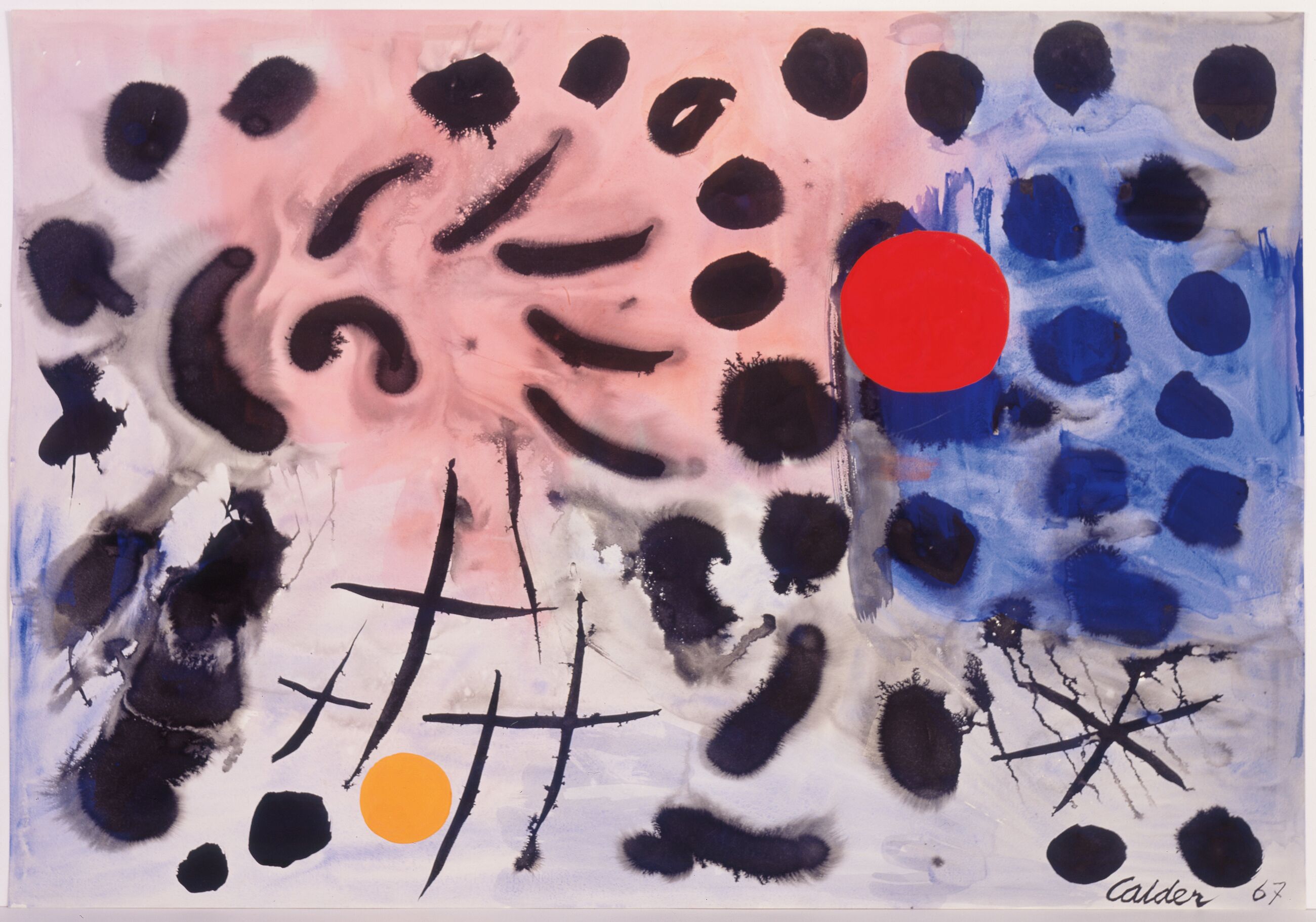Inside Ursula Issue 14
By Randy Kennedy

“It is a small plant / delicately branched and / tapering conically / to a point, each branch and the peak a wire for / green pods, blind lanterns / starting upward from / the stalk each way to / a pair of prickly edged blue / flowerets: it is her regard, / a little plant without leaves, / a finished thing guarding / its secret.”—William Carlos Williams
Working on the cover story for this issue of Ursula a few months ago, I took the train from New York to Philadelphia to see the still-under-construction site of Calder Gardens, the highly unconventional oasis for the work of Alexander Calder that will soon join the Philadelphia Museum of Art, the Rodin Museum and the Barnes Foundation along the Benjamin Franklin Parkway to form one of the most dynamic places in the United States—and the world—to see art.
The theme of the issue, “Places and Spaces,” had me in mind of travel, the road, the far-flung, the pleasures of being on the move. But then I started to think about the remarkable figurative distances that one might travel in just a few hundred yards around the parkway. You could start with Rodin, whose work influenced Alexander Stirling Calder, Calder’s father and a notable public sculptor of his day. Then you cross North 21st Street to the Barnes to see Matisse, whose son Pierre was Calder’s dealer and promoter and who, in 1934, at the Fuller Building in New York, opened the most expansive American exhibition at the time of Calder’s mobiles.
The thought carries you next to the top of the parkway, to the Philadelphia Museum of Art, to see the fantastic rooms devoted to Duchamp, who, in 1931, gave Calder the name “mobiles”—suggesting both motion and motive—to describe the works. On your way out you swing by The Gross Clinic (1875), the towering phantasmagoria by Thomas Eakins, under whom Alexander Stirling Calder once studied. And then, because it’s still early, you circle back to the Barnes because you somehow missed Two Women Surrounded by Birds (1937) by Miró, whom Calder met and befriended in Paris in 1928, forging a bond that lasted the rest of Calder’s life. Finally, you end the day in the brand-new Calder Gardens, in the shade of a red cedar tree, with a late-afternoon view of Calder’s brilliantly red Jerusalem Stabile II (1976).

Alexander Calder, Untitled, 1967. Courtesy of Calder Foundation, New York / Art Resource, New York © 2025 Calder Foundation, New York / Artists Rights Society (ARS), New York
When I arrived at the Gardens site the day of my trip, Piet Oudolf, the renowned Dutch garden designer, was at work in a hard hat, directing the arrangement of an enormous array of potted perennial flowers and shrubs as if he were a painter fine-tuning a composition; he had already placed the red cedar, along with dozens of other trees, to form a kind of woodland section of the Gardens. In the distance stood the elegant, understated wood-clad structural complex, designed by Jacques Herzog of Herzog & de Meuron, that will contain the site’s interior galleries and gathering rooms. Though much work was still left to do, I could intuit the intersections where Oudolf’s plantings and Herzog’s architecture would come together with Calder’s work in spaces evocative of sunken gardens.
At a desk later in the project’s construction trailer, Oudolf told me that he sees his work in such projects as something akin to anti-travel. “There’s a resonance in plants and nature that comes to you if you are open for it and still,” he said. “Life is just too busy sometimes. And there’s too little place in it for quiet and thinking. It’s why public gardens are so important. They’re often the only place where people can easily get among trees and plants and earth. They’re a good remedy to come back to life.”
This, and the growing gardens around me, made me think about William Carlos Williams’s concept of “the local,” a rootedness in one’s world that was essential to his vision of literary modernism. It didn’t mean parochialism. It meant a strong sense of place as a springboard, “the freeing agency to all thought, in that it is everywhere accessible to all.”
Calder himself echoed this idea in his thinking about the importance of specificity in art—art as place. “It must not be just a ‘fleeting’ moment,” he once wrote, “but a physical bond between the varying events in life.”
—Randy Kennedy
–
Ursula Issue 14 (Fall 2025) is available to purchase now.
